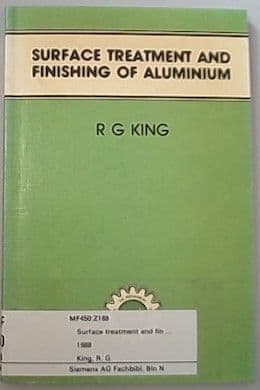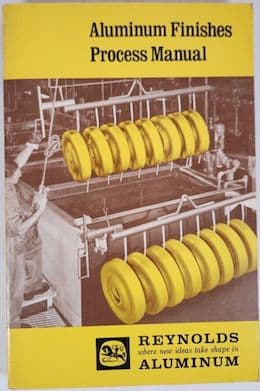
-----
Problem with my Nickel Acetate Seal? Or some other tank?
Q. I work at a plating company where we do a wide range of plating processes. For over a month now, our nitric acid drop tests to check our nickel acetate seal have been failing at 10 and 15 minutes.
For those unfamiliar with the test, you take a part through a sulfuric anodize process, dye it, and seal it with nickel acetate. You then take the sealed part and place a drop of 50% nitric acid on it. After 2 minutes, you wipe it off and check for any discoloration, indicating that the acid has penetrated the seal. None of our parts has failed this test so far.
What we do in addition to this is run a panel through the same process every week, only we run the drop test for 5, 10, and 15 minutes. With few exceptions, it has failed at 10 and 15 minutes, even after making up a brand new bath. All of the control parameters currently in place (temperature, pH, concentration) are within specifications. So far, we have not uncovered any problems with the sulfuric anodize tanks, or our cleaners, or any other part of the process.
Does anybody have any ideas on how to solve this problem?
Chemical Analyst - Dayton, Ohio, USA
May 2, 2011
for Shops, Specifiers & Engineers

avail from eBay, AbeBooks, or Amazon

avail from eBay, AbeBooks, or Amazon

avail from eBay, AbeBooks, or Amazon

avail from eBay, AbeBooks, or Amazon

avail from eBay or Amazon
(as an Amazon Associate & eBay Partner, we earn from qualifying purchases)
A. I'm not quite sure why you consider this a "problem". Is your customer requiring you to exceed the requirements set forth in ASTM B136? I'm assuming you're using a typical mid-temp Nickel acetate seal.
Is this (extended exposure to a HN03 solution) a test that you've performed in the past, and had no problem achieving the results you wanted, and now aren't achieving the same results?
There are different sealing methods that would easily pass an extended amount of time of exposure to nitric acid, but they have the downside of not being very production friendly, or cost efficient (i.e., extended sealing times, and higher temperatures.)

Marc Green
anodizer - Boise, Idaho
A. Hi Jim.
For 2 mins, your part already pass ASTM B136 (Stain resistance test for anodic coating). For longer times :
1. You can try different method and type of sealing as Marc suggested.
2. Take note of the time between seal and the nitric acid test itself. ASTM B136, Note 7 " Sometimes the time interval between sealing and application of stain test influences the results. In such cases, the purchaser and seller should agree upon a time limit for application of this test after the sealing operation ".
3. Also take note, B136 calls for a Nitric acid concentration of 40 plus mins 5 mass % , not 50%.
Good luck.
- Penang, Malaysia
Q. We have had success testing it out to 15 minutes before, and there is a lot of concern now that we cannot seem to do it anymore.
The major concern is that whatever is causing the seal drop test to start failing at 10 and 15 minutes may eventually get worse and cause the test to start failing at 5 minutes and, ultimately, 2 minutes.
- Dayton, Ohio, USA
A. One thing you should check (as this is a lesson I've learned). I know with these type of tests, and also with titrating solutions, is that shops sometimes tend to buy more they they can use before the solutions go past their recommended shelf life...and tend to lose their effectiveness.
Is it possible that you had been using older nitric acid in past tests, and recently got in a new supply?

Marc Green
anodizer - Boise, Idaho
Q. We had a Nitric Acid solution that was about to expire (we make them up with an expiration of 6 months) and a newly made up nitric solution and both yielded the same results.
As to the time elapse between sealing and testing: that seems very odd to me. Shouldn't the panel, once sealed, give you the same result, regardless of when you test it?
- Dayton, Ohio, USA
May 24, 2011
Q, A, or Comment on THIS thread -or- Start a NEW Thread